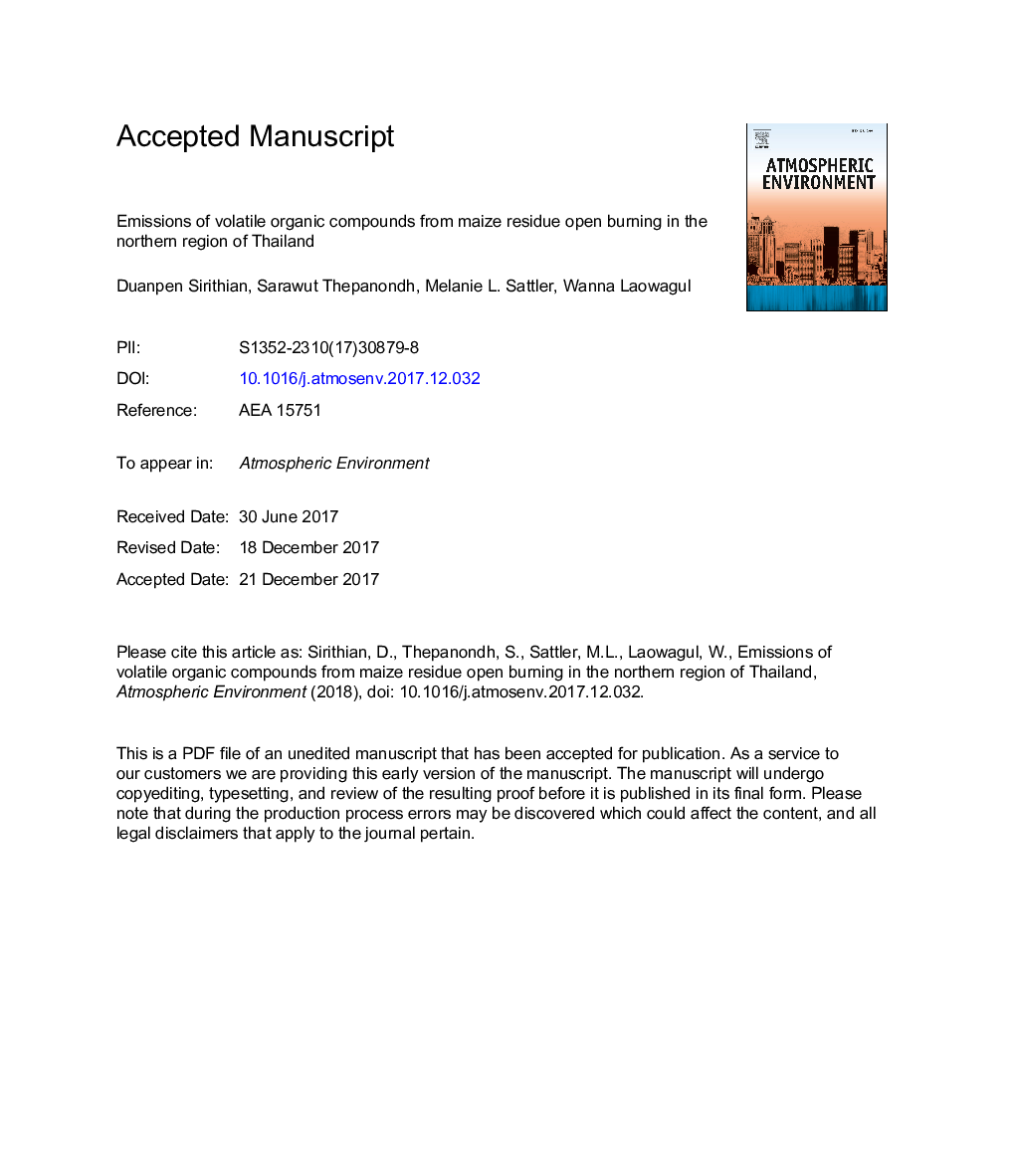| Article ID | Journal | Published Year | Pages | File Type |
|---|---|---|---|---|
| 8864133 | Atmospheric Environment | 2018 | 34 Pages |
Abstract
Emission factors for speciated volatile organic compounds (VOCs) from maize residue burning were determined in this study based on chamber experiments. Thirty-six VOC species were identified by Gas Chromatography/Mass Spectrometer (GC/MS). They were classified into six groups, including alkanes, alkenes, oxygenated VOCs, halogenated VOCs, aromatics and other. The emission factor for total VOCs was estimated as about 148â¯mgâ¯kgâ1 dry mass burned. About 68.4% of the compounds were aromatics. Field samplings of maize residues were conducted to acquire the information of fuel characteristics including fuel loading, fraction of maize residues that were actually burned as well as proximate and elemental analysis of maize residues. The emission factors were then applied to estimate speciated VOC emissions from maize residue open burning at the provincial level in the upper-northern region of Thailand for the year 2014. Total burned area of maize covered an area of about 500,000â¯ha which was about 4.7% of the total area of upper-northern region of the country. It was found that total VOC emissions released during the burning season (January-April) was about 79.4 tons. Ethylbenzene, m,p-xylene, 1,2,4-trimethylbenzene, acetaldehyde and o-xylene were the major contributors, accounting for more than 65% of total speciated VOC emissions.
Related Topics
Physical Sciences and Engineering
Earth and Planetary Sciences
Atmospheric Science
Authors
Duanpen Sirithian, Sarawut Thepanondh, Melanie L. Sattler, Wanna Laowagul,
